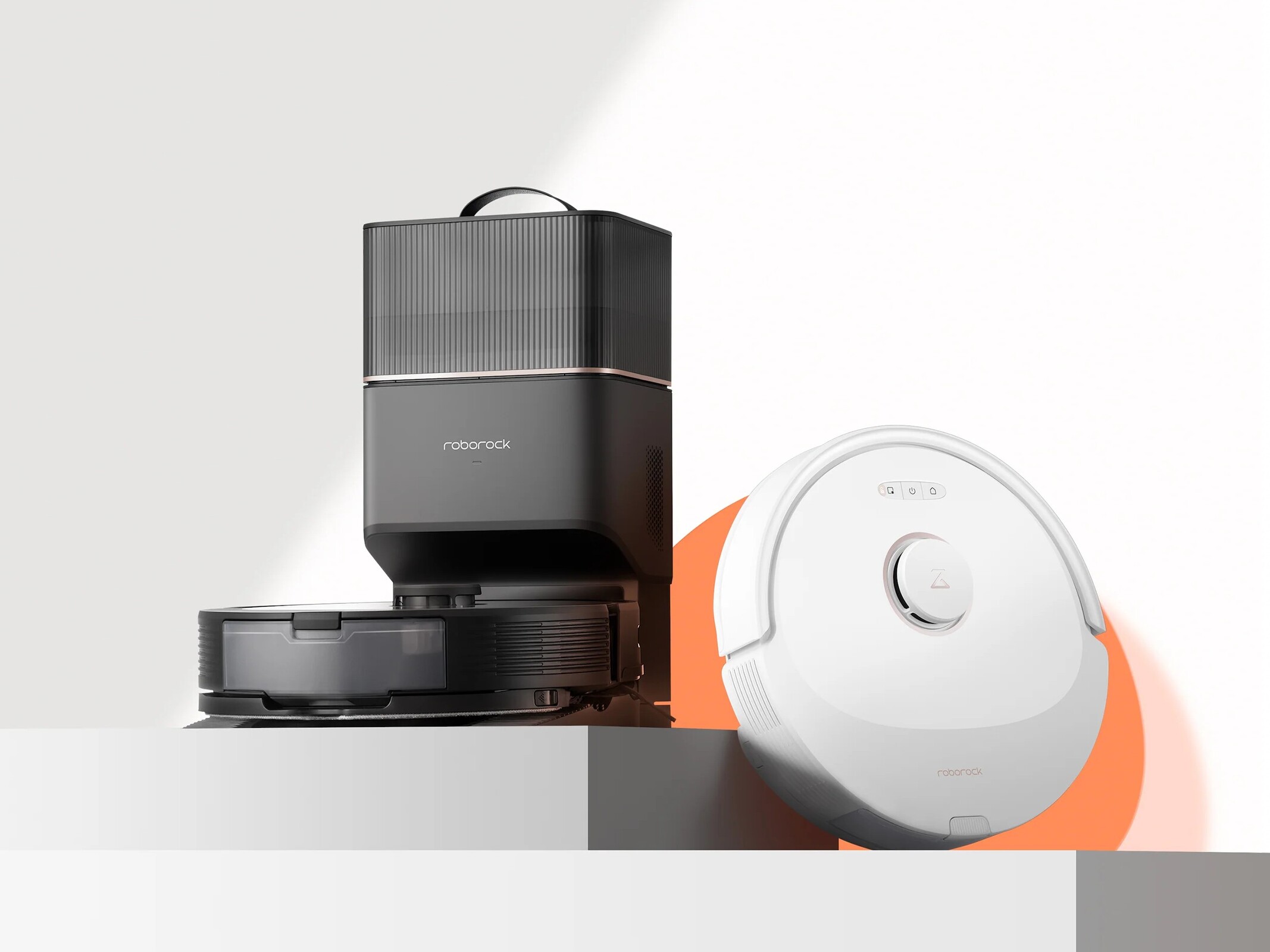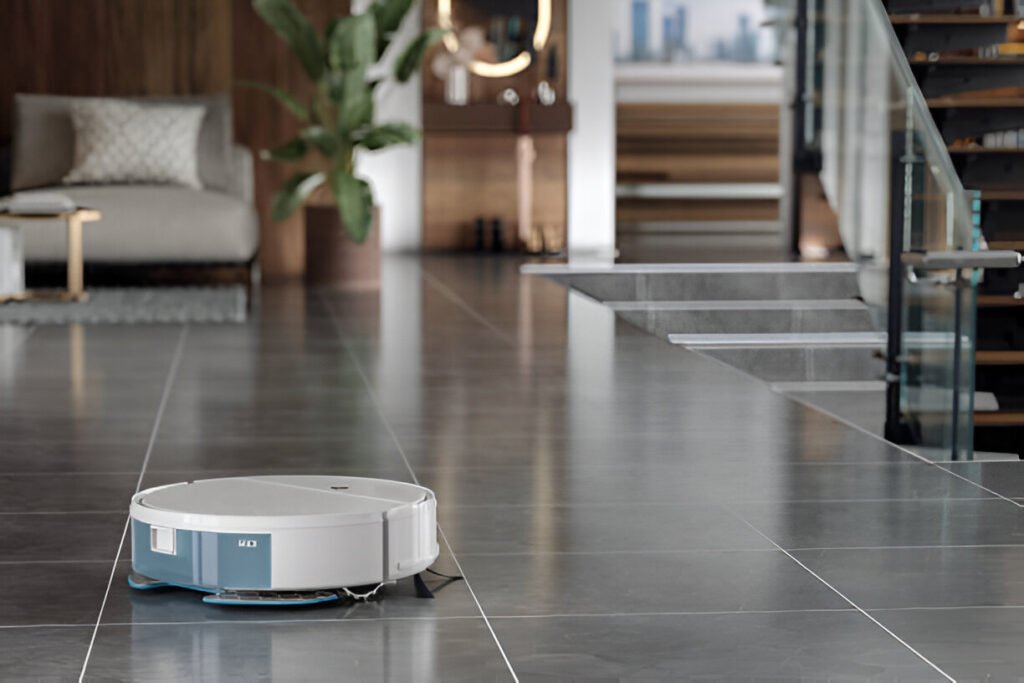Robot vacuums use sensors and algorithms to navigate and clean floors autonomously. They detect obstacles and map rooms efficiently.
Robot vacuums have revolutionized home cleaning with their smart technology. These devices operate autonomously, relying on a combination of sensors and algorithms to navigate around your home. They map out the layout of rooms, detect obstacles, and adjust their cleaning paths accordingly.
This ensures efficient and thorough cleaning without human intervention. Robot vacuums can handle various floor types, such as hardwood, carpet, and tile. With features like scheduled cleaning and app control, they offer convenience and time-saving benefits. Their compact design allows them to reach under furniture and into tight spaces, ensuring a comprehensive clean.
Introduction To Robot Vacuums
Robot vacuums have changed how we clean our homes. These smart devices offer convenience and efficiency. They navigate your space and clean it without much effort from you. Let’s dive into the world of robot vacuums.
Rise Of Smart Cleaning
Smart cleaning began with simple devices. Early robot vacuums used basic sensors to avoid obstacles. Now, they come with advanced technologies. These include mapping systems and connectivity features.
Today’s robot vacuums can learn your home’s layout. They adapt to different floor types and avoid falling down stairs. They also return to their charging stations on their own.
Appeal Of Automation
The appeal of automation is strong. Robot vacuums save time and effort. You can set schedules for them to clean when you are not home. Many models can be controlled via smartphone apps.
Automation also means consistent cleaning. These vacuums don’t miss spots or get tired. They ensure your home stays clean with minimal intervention. Below is a table showing key features of modern robot vacuums:
| Feature | Description |
|---|---|
| Mapping Systems | Uses cameras or lasers to map your home. |
| Smartphone Control | Allows control and scheduling via mobile apps. |
| Self-Charging | Returns to docking station to recharge. |
| Obstacle Detection | Avoids furniture and objects in its path. |

Credit: www.notebookcheck.net
Core Components
The heart of a robot vacuum lies in its core components. Understanding these parts helps explain how these smart devices clean efficiently.
Sensors And Cameras
Robot vacuums use a variety of sensors and cameras to navigate. These sensors detect obstacles and map the room. Some common sensors include:
- Infrared Sensors
- Ultrasonic Sensors
- Cliff Sensors
Infrared sensors help the robot avoid furniture. Ultrasonic sensors measure distance to objects. Cliff sensors prevent falls from stairs. Cameras provide a visual map, ensuring thorough cleaning.
Brushes And Vacuum Mechanism
The brushes and vacuum mechanism are crucial for dirt removal. They work together to clean floors effectively. There are usually two types of brushes:
- Side Brushes
- Main Brushes
Side brushes sweep dirt into the vacuum’s path. Main brushes pick up larger debris. The vacuum mechanism then sucks up the dirt into a dustbin. This combination ensures a clean floor.
Navigation Systems
Robot vacuums are marvels of modern technology. They navigate homes with precision. The secret is their advanced navigation systems. These systems allow them to move efficiently and avoid obstacles. Let’s explore how they achieve this.
Mapping The Environment
Robot vacuums use sensors to map the environment. They scan the area to understand the layout. This data helps them create a detailed map of your home. The map guides the vacuum’s cleaning path. It ensures every spot gets covered.
Some robots use laser technology for mapping. Others use cameras and visual sensors. Both methods are effective. They help the vacuum know where it has cleaned and where it still needs to go.
| Mapping Method | Technology Used |
|---|---|
| Laser | LIDAR (Light Detection and Ranging) |
| Camera | Visual Sensors |
Obstacle Detection
Obstacle detection is crucial for robot vacuums. They need to avoid bumping into objects. Sensors play a key role here too. They detect obstacles like furniture, walls, and pets.
There are several types of sensors used:
- Infrared sensors: Detect objects by reflecting light.
- Ultrasonic sensors: Use sound waves to sense obstacles.
- Cliff sensors: Prevent the vacuum from falling down stairs.
These sensors work together. They allow the vacuum to navigate smoothly. The vacuum can clean around objects without getting stuck. This technology makes robot vacuums smart and efficient.

Credit: www.facebook.com
Cleaning Algorithms
Robot vacuums have revolutionized home cleaning with their smart technology. At the heart of this innovation are cleaning algorithms. These algorithms guide the robot vacuum’s movements, ensuring efficient and effective cleaning.
Path Planning
Path planning is a crucial aspect of robot vacuums. This feature allows the device to map out the most efficient cleaning route. The vacuum uses sensors and cameras to understand the layout of your home.
It starts by creating a virtual map. This map helps it know where it has cleaned and where it needs to go. By following a systematic path, it covers more area and avoids missing spots.
| Feature | Description |
|---|---|
| Sensors | Detects obstacles and floor types |
| Cameras | Creates a visual map of the area |
| Virtual Map | Tracks cleaned and uncleaned areas |
Adaptive Cleaning
Adaptive cleaning allows the robot vacuum to adjust its cleaning strategy. It uses data from sensors to understand the dirt levels in different areas. This feature ensures a more thorough clean by spending extra time on dirtier spots.
For example, the vacuum might increase suction power on a carpeted area. In contrast, it might move faster on a hard floor. This adaptability makes robot vacuums highly efficient.
- Increased Suction Power for carpets
- Speed Adjustment based on floor type
- Extra Time on dirtier areas
These features make robot vacuums stand out from traditional cleaning methods. Their smart technology ensures your home remains clean with minimal effort from you.
Power Management
Power management is crucial for robot vacuums. It ensures they run efficiently and effectively. Good power management means longer cleaning times and less downtime.
Battery Life
Battery life is a key factor for any robot vacuum. A longer battery life means more cleaning time before needing a recharge. Most robot vacuums use lithium-ion batteries for this reason. Lithium-ion batteries are lightweight and long-lasting.
Battery life varies by model. Generally, expect 60-120 minutes of runtime. Some high-end models can go even longer. The battery life depends on the vacuum’s settings and the type of floor it cleans.
| Model | Battery Life |
|---|---|
| Basic Model | 60 minutes |
| Mid-Range Model | 90 minutes |
| High-End Model | 120+ minutes |
Auto-charging Features
Auto-charging is a smart feature of robot vacuums. The vacuum returns to its charging dock when the battery is low. This ensures it is always ready for the next cleaning session.
Some advanced models even resume cleaning after charging. This is very convenient. You don’t need to monitor the vacuum constantly.
- The vacuum detects low battery
- It finds its way back to the charging dock
- Once charged, it resumes cleaning
Auto-charging features make robot vacuums user-friendly and efficient. You save time and effort with these smart devices.
Smart Connectivity
Robot vacuums have revolutionized home cleaning with their smart connectivity features. They use advanced technology to provide a seamless user experience. This section explores the smart connectivity aspects of robot vacuums.
Wi-fi And App Integration
Robot vacuums come equipped with Wi-Fi capabilities. This allows them to connect to your home network. Once connected, you can control them via a dedicated app.
The app provides various functionalities:
- Start and stop cleaning sessions
- Set cleaning schedules
- Monitor cleaning progress
These features make it easy to manage your vacuum remotely. You can control it from anywhere using your smartphone.
Voice Control Compatibility
Many robot vacuums are compatible with voice assistants. They work with popular systems like Amazon Alexa and Google Assistant.
With voice control, you can:
- Start cleaning with a simple voice command
- Pause or stop the vacuum
- Send it back to its charging station
Voice control adds an extra layer of convenience. You don’t even need to use your hands to manage the vacuum.
These features make robot vacuums smarter and more user-friendly. Smart connectivity is a key component of their appeal. It makes everyday cleaning easier and more efficient.
Maintenance And Troubleshooting
Understanding how to maintain and troubleshoot your robot vacuum is crucial. This ensures it runs smoothly and lasts longer. Regular care and timely fixes prevent common issues and extend its life.
Routine Maintenance
Regular maintenance keeps your robot vacuum in top shape. Follow these simple steps:
- Empty the dustbin: After every cleaning cycle, empty the dustbin. This prevents clogging.
- Clean the brushes: Remove hair and debris from the brushes weekly.
- Check the filters: Clean or replace filters every month. This ensures optimal performance.
- Wipe sensors: Use a soft cloth to clean sensors. This helps in accurate navigation.
Common Issues And Solutions
Robot vacuums can face some common issues. Here’s how to fix them:
| Issue | Solution |
|---|---|
| Not charging | Check the charging dock. Ensure the connections are clean. |
| Stuck on obstacles | Clear the path. Remove small objects and loose cables. |
| Low suction power | Clean the filters and brushes. Empty the dustbin. |
| Error messages | Refer to the user manual. Follow the troubleshooting steps. |
By following these tips, your robot vacuum will work efficiently. Regular maintenance and quick fixes ensure a clean home every time.
Future Of Robot Vacuums
The future of robot vacuums looks promising. These smart devices are evolving rapidly. They are becoming more efficient and intelligent. Let’s explore the advancements and market trends shaping their future.
Technological Advancements
Robot vacuums are integrating cutting-edge technologies. AI and machine learning are making them smarter.
- AI Algorithms: These algorithms help vacuums navigate better. They avoid obstacles and learn room layouts.
- Enhanced Sensors: Advanced sensors detect dirt and debris. They ensure a thorough clean.
- Voice Control: Many models now support voice commands. This adds convenience for users.
Battery life is improving. New models can clean for longer periods. Some vacuums even return to their docks to recharge.
Market Trends
The market for robot vacuums is expanding. More people are adopting these smart cleaners.
| Year | Market Growth |
|---|---|
| 2021 | 10% |
| 2022 | 15% |
| 2023 | 20% |
Robot vacuums are becoming more affordable. This makes them accessible to more households.
- More brands are entering the market.
- New features are being introduced regularly.
- Consumers have more choices than ever before.
Eco-friendly models are gaining popularity. They use less energy and have recyclable parts. This appeals to environmentally-conscious buyers.
Smart home integration is another trend. Robot vacuums can now connect with other smart devices. This creates a seamless cleaning experience.

Credit: news.samsung.com
Frequently Asked Questions
What Is The Science Behind Robot Vacuum Cleaners?
Robot vacuum cleaners use sensors and algorithms to navigate and clean floors. They detect obstacles, dirt, and map spaces efficiently.
What Technology Do Robot Vacuums Use?
Robot vacuums use advanced sensors, AI algorithms, and mapping technology. They navigate spaces, avoid obstacles, and create cleaning paths.
How Does The Robot Vacuum Work?
A robot vacuum navigates your home using sensors and maps. It sucks up dirt and debris into a built-in bin.
Do Robot Vacuums Use Artificial Intelligence?
Yes, many robot vacuums use artificial intelligence. AI helps them navigate, avoid obstacles, and optimize cleaning routes efficiently.
Conclusion
Robot vacuums simplify cleaning with smart technology. They navigate spaces, avoid obstacles, and remember layouts efficiently. Investing in one saves time and effort. Their advanced features make them a valuable addition to any home. Embrace the future of cleaning with a robot vacuum.
Enjoy cleaner floors effortlessly.

